A wide, thick, and powerful back is the cornerstone of an impressive physique. It’s not just about looking good—it’s about building functional strength, improving posture, and enhancing performance in every lift you do. Whether you’re chasing that coveted V-taper or aiming to lift heavier weights, the best back workout for muscle mass requires a strategic mix of exercises targeting all major back muscles: lats, traps, rhomboids, and erector spinae. In this detailed blog, we’ll explore six must-do back exercises (plus a bonus move) to drive serious muscle growth, backed by science and practical tips to maximize your results. Let’s dive into the ultimate back-building blueprint!
Why Train Your Back for Muscle Mass?
Your back is one of the largest and most complex muscle groups in your body. It’s responsible for pulling movements, spinal stability, and supporting nearly every compound lift—think squats, bench presses, and deadlifts. A strong back doesn’t just enhance your appearance; it reduces injury risk, corrects posture from hours of sitting, and boosts athletic performance.
For hypertrophy (muscle growth), you need to hit all regions of your back—upper, middle, and lower—with enough volume, intensity, and variety. Research shows that 10-20 sets per muscle group per week, spread over 1-2 sessions, optimizes growth. Let’s build that foundation with the right exercises.
Crafting the Best Back Workout for Muscle Mass
To design a workout that delivers serious muscle growth, focus on these principles:
- Reps and Sets: Aim for 3-5 sets of 8-12 reps per exercise, a sweet spot for hypertrophy. Use 65-85% of your one-rep max (1RM) to balance tension and volume.
- Rest Periods: Rest 60-90 seconds between sets to maintain intensity while allowing recovery.
- Progressive Overload: Gradually increase weight, reps, or sets over weeks to keep challenging your muscles.
- Form First: Proper technique ensures you target the right muscles and avoid strain.
Now, let’s break down the must-do back exercises that will transform your back into a mass-packed masterpiece.
6+ Must-Do Back Exercises for Serious Muscle Growth
Given Below are some Best Back Exercise you can add in your Next Workout:
1. Deadlifts – The Total Back Titan

Muscles Targeted: Lats, traps, rhomboids, erector spinae, glutes, hamstrings
- Why It’s Essential: Deadlifts are the ultimate compound lift, engaging your entire posterior chain. They build raw strength and thickness across your lower and mid-back, making them indispensable for mass.
- How to Perform: Stand with feet hip-width apart, bar over mid-foot. Grip the bar just outside your knees (overhand or mixed grip with straps for heavy loads). Keep your chest up, back flat, and core braced. Lift by driving through your heels, extending hips and knees until standing tall. Lower slowly, keeping the bar close to your body.
Pro Tip: Avoid rounding your back—use a mirror or record yourself to check form. Start light to master technique before piling on weight.
Science Bit: Studies show deadlifts activate the erector spinae and lats significantly, releasing growth hormones for overall muscle gain.
2. Pull-Ups – Lat-Widening King

Muscles Targeted: Lats, traps, rhomboids, biceps
- Why It’s Essential: Pull-ups are a bodyweight beast for building upper back width and strength. They emphasize the lats, creating that V-taper look.
- How to Perform: Hang from a bar with an overhand grip, hands slightly wider than shoulders. Engage your core, pull your chest toward the bar (chin above it), then lower with control. Aim for a 2-3 second descent.
Pro Tip: Too tough? Use resistance bands or an assisted pull-up machine. Too easy? Add a weight belt or dumbbell between your feet.
Science Bit: Electromyography (EMG) data ranks pull-ups among the top lat activators, especially with a wider grip.
3. Bent-Over Barbell Rows – Mid-Back Mass Builder

Muscles Targeted: Lats, rhomboids, traps, rear delts
- Why It’s Essential: This row variation adds thickness and density to your mid-back, complementing the width from pull-ups.
- How to Perform: Hinge at the hips (45-degree angle), keep your back straight, and grip a barbell with hands shoulder-width apart. Row the bar to your lower chest, squeezing your shoulder blades, then lower slowly.
Pro Tip: Don’t jerk the weight—use a 2-second up, 2-second down tempo. If your lower back fatigues, try a supported chest row variation.
Science Bit: Bent-over rows hit the mid-traps and rhomboids hard, per EMG studies, enhancing back depth.
4. Lat Pulldowns – Controlled Lat Expansion

Muscles Targeted: Lats, biceps, rear delts
- Why It’s Essential: Lat pulldowns isolate the lats with adjustable resistance, making them perfect for volume and pump work.
- How to Perform: Sit at a pulldown machine, grip the bar wider than shoulders, and pull it to your upper chest. Lean back slightly, squeeze your lats, then extend arms fully.
Pro Tip: Vary grips (wide, narrow, neutral) weekly to hit different lat fibers. Slow the eccentric phase for extra tension.
Science Bit: Similar to pull-ups, lat pulldowns excel at lat activation but allow precise load control.
5. Single-Arm Dumbbell Rows – Unilateral Precision

Muscles Targeted: Lats, rhomboids, traps, biceps
- Why It’s Essential: This unilateral move corrects imbalances, improves symmetry, and allows a deep lat stretch.
- How to Perform: Brace one hand and knee on a bench, let the other arm hang with a dumbbell. Row the weight to your hip, elbow close to your side, then lower fully for a stretch.
Pro Tip: Rotate your torso slightly at the top to engage more lat fibers. Use straps if grip fails before your back does.
Science Bit: Unilateral rows increase range of motion and core engagement, boosting hypertrophy potential.
6. T-Bar Rows – Trap and Lat Powerhouse

Muscles Targeted: Lats, traps, rhomboids, rear delts
- Why It’s Essential: T-bar rows combine heavy loading with a unique angle, packing mass onto your mid and upper back.
- How to Perform: Straddle a T-bar machine or landmine setup, grip the handles, and row the weight to your chest. Keep your back flat and core tight.
Pro Tip: Use smaller plates (25s instead of 45s) for a bigger range of motion. Neutral grip targets traps more; wide grip hits lats.
Science Bit: The supported position reduces lower back strain, letting you focus on upper back contraction.
Bonus: Face Pulls – Rear Delt and Trap Finisher
Muscles Targeted: Rear delts, traps, rhomboids
- Why It’s Essential: Face pulls refine your upper back and improve shoulder health, rounding out your mass workout.
- How to Perform: Set a cable at face height with a rope attachment. Pull the rope toward your ears, flaring elbows out, and squeeze your rear delts.
Pro Tip: Keep it light (12-15 reps) and focus on form—don’t swing or use momentum.
Science Bit: EMG data highlights face pulls for rear delt and trap activation, enhancing posture and detail.
Sample Back Workout for Muscle Mass
Here’s how to combine these exercises into a killer session:
- Deadlifts: 4 sets x 8 reps (warm up first)
- Pull-Ups: 3 sets x 10-12 reps (assist or add weight as needed)
- Bent-Over Barbell Rows: 4 sets x 10 reps
- Lat Pulldowns: 3 sets x 12 reps
- Single-Arm Dumbbell Rows: 3 sets x 12 reps per side
- T-Bar Rows: 3 sets x 10 reps
- Face Pulls: 3 sets x 15 reps
Total: 23 sets, hitting the 10-20 set sweet spot for back hypertrophy.
Best Practices for Maximum Back Growth
follow the mentioned practices for Maximize your Back Growth:
1. Progressive Overload
Increase weight by 5-10% every 2-4 weeks, or add reps/sets. Track your lifts to ensure consistent progress.
2. Mind-Muscle Connection
Visualize your back muscles contracting with each rep. Slow down the eccentric (lowering) phase to feel the stretch and squeeze.
3. Nutrition and Recovery
- Protein: Aim for 0.8-1g per pound of bodyweight daily. A post-workout shake like Protyze Nitro Clear Whey (30g protein + 3g creatine) speeds recovery.
- Calories: Eat in a slight surplus (200-500 above maintenance) to fuel growth.
- Sleep: 7-9 hours nightly repairs muscle tissue.
Frequency
Train your back 1-2 times per week. Pair with biceps or split into vertical (pull-ups, pulldowns) and horizontal (rows, deadlifts) days for variety.
Why Choose Protyze for Your Back Gains?
Recovery is half the battle, and Protyze Nitro Clear Whey Protein shines here. Made by Alphacentric Healthcare Pvt Ltd, it packs 30 grams of whey isolate and 3 grams of creatine monohydrate per serving. It’s 99% lactose-free, light on the stomach, and available in flavors like Mango Delight—perfect for a post-back-day refuel. The creatine boost enhances strength, complementing your deadlifts and rows.
Conclusion
Building a massive back isn’t quick, but it’s achievable with the right plan. Deadlifts, pull-ups, bent-over rows, lat pulldowns, dumbbell rows, and T-bar rows form the best back workout for muscle mass, targeting every fiber for serious muscle growth.
Add face pulls for detail, prioritize progressive overload, and fuel your body with quality nutrition. Whether you’re a beginner or a seasoned lifter, consistency with these moves will sculpt a back that’s strong, wide, and thick. Ready to crush it? Grab Protyze Nitro Clear Whey, hit the gym, and let us know your progress in the comments!
TL;DR
For the best back workout for muscle mass, hit deadlifts (8 reps), pull-ups (10-12), bent-over rows (10), lat pulldowns (12), dumbbell rows (12/side), and T-bar rows (10). Finish with face pulls (15). Do 3-5 sets, progressively overload, and recover with Protyze Nitro Clear Whey (30g protein + 3g creatine). Train 1-2x weekly for serious muscle growth.





